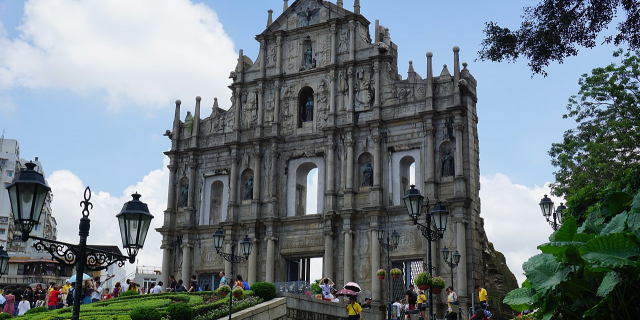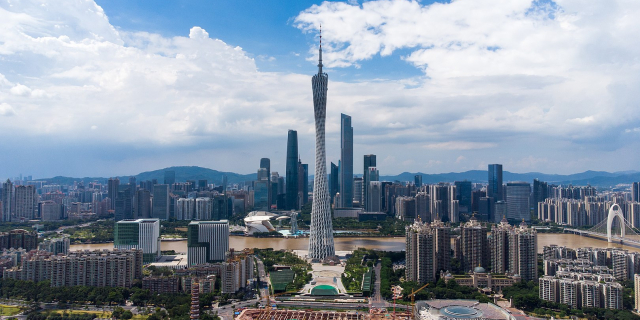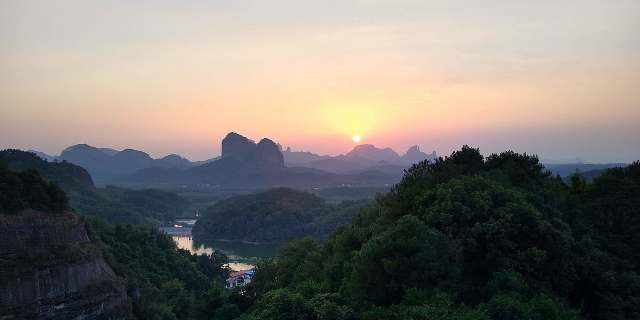九龍寨城
( Kowloon Walled City )
Kowloon Walled City was a densely populated and largely ungoverned enclave of China within the boundaries of Kowloon City, British Hong Kong.
Built as an Imperial Chinese military fort, the walled city became a de jure enclave after the New Territories were leased to the United Kingdom in 1898. Its population increased dramatically after the end of the Japanese occupation of Hong Kong during World War II, attracting mostly refugees fleeing the renewed Chinese Civil War.
By the late 1980s, the walled city contained roughly 35,000 residents within its territory of 2.6 hectares (6.4 acres; 26,000 m2). There was largely no governing of the city, therefore the city's citizens and businesses had no building codes to adhere to. Businesses that dealt in otherwise banned products, like dog meat, thrived. From the 1950s to the 1970s, it w...Read more
Kowloon Walled City was a densely populated and largely ungoverned enclave of China within the boundaries of Kowloon City, British Hong Kong.
Built as an Imperial Chinese military fort, the walled city became a de jure enclave after the New Territories were leased to the United Kingdom in 1898. Its population increased dramatically after the end of the Japanese occupation of Hong Kong during World War II, attracting mostly refugees fleeing the renewed Chinese Civil War.
By the late 1980s, the walled city contained roughly 35,000 residents within its territory of 2.6 hectares (6.4 acres; 26,000 m2). There was largely no governing of the city, therefore the city's citizens and businesses had no building codes to adhere to. Businesses that dealt in otherwise banned products, like dog meat, thrived. From the 1950s to the 1970s, it was controlled by local triads and had high rates of prostitution, gambling, and drug abuse.
In January 1987, the Hong Kong government announced plans to demolish the walled city. After an arduous eviction process, and the transfer of de jure sovereignty of the enclave from China to Britain, demolition began in March 1993 and was completed in April 1994.
Kowloon Walled City Park opened in December 1995 and occupies the area of the former walled city. Some historical artefacts from the walled city, including its yamen building and remnants of its southern gate, have been preserved there.
 Lung Tsun Stone Bridge and Lung Tsun Pavilion (Pavilion for Greeting Officials) of Kowloon Walled City in 1898
Lung Tsun Stone Bridge and Lung Tsun Pavilion (Pavilion for Greeting Officials) of Kowloon Walled City in 1898The history of the walled city can be traced back to the Song dynasty (960–1279), when a military outpost was set up to manage the salt trade in the area. Little took place for hundreds of years afterward, although 30 guards were stationed there in 1668.[1] A small coastal fort was established around 1810 after Chinese forces abandoned Tung Lung Fort.[2] In 1842, during Qing Daoguang Emperor's reign, Hong Kong Island was ceded to Britain by the Treaty of Nanking. As a result, the Qing authorities felt it necessary to improve the fort to rule the area and check further British influence. The improvements, including the formidable defensive wall, were completed in 1847. The walled city was captured by rebels during the Taiping Rebellion in 1854, before being retaken a few weeks later.[1][3] The present walled city's "Dapeng Association House" forms the remnants of what was previously Lai Enjue's garrison.
 1915 map of the Hong Kong region with Kowloon Walled City listed as "Chinese Town" at the upper right-hand corner
1915 map of the Hong Kong region with Kowloon Walled City listed as "Chinese Town" at the upper right-hand cornerThe Convention for the Extension of Hong Kong Territory of 1898 handed additional parts of Hong Kong (the New Territories) to Britain for 99 years, but excluded the walled city, which at the time had a population of roughly 700. China was allowed to continue to keep officials there as long as they did not interfere with the defence of British Hong Kong. The following year, the governor, Sir Henry Blake, suspected that the viceroy of Canton was using troops to aid resistance to the new arrangements. On 14 April 1899, British forces attacked the walled city, only to find the viceroy's soldiers gone, leaving behind only the mandarin and 150 residents.[1] The Qing dynasty ended its rule in 1912, leaving the walled city to the British.
Though the British claimed ownership of the walled city, they did little with it over the following few decades. The Protestant church[which?] established an old people's home in the old "yamen" (Chinese administrative office) as well as a school and an almshouse in other former offices. Aside from such institutions, however, the walled city became a mere curiosity for British colonials and tourists to visit; it was labelled as "Chinese Town" in a 1915 map. In 1933, the Hong Kong authorities announced plans to demolish most of the decaying walled city's buildings, compensating the 436 squatters that lived there with new homes. That same year, the Nationalist Chinese government protested, claiming jurisdiction over the city.[4][5] The Nationalist Chinese government continued to make claims on its jurisdiction throughout 1935, 1936, and the first half of 1937, until the war between China and Japan started.[6]
By 1940, only the yamen, the school, and one house remained. During the World War II occupation of Hong Kong, the Japanese occupying forces demolished the city's wall and used the stone to expand the nearby Kai Tak Airport.[1]
Urban settlement An aerial view of Kowloon Walled City and the neighbouring Sai Tau Tsuen village in 1972
An aerial view of Kowloon Walled City and the neighbouring Sai Tau Tsuen village in 1972After Japan's surrender in 1945, China announced its intent to reclaim the walled city. In November 1946, Nationalist Chinese officials created the "Draft Outline Plan for Reinstatement of Administration" of the area, which included an office, schools, police, and other functions.[7] Refugees fleeing the Chinese Civil War post-1945 poured into Hong Kong, and 2,000 squatters occupied the walled city by 1947. After a failed attempt to drive them out in 1948, the British adopted a 'hands-off' policy in most matters concerning the walled city.[1] On 8 January 1948, the Nationalist Chinese government sent a memorandum to the British Ambassador, stating "The Ministry of Foreign Affairs now formally declare to the British Embassy that, in accordance with the provisions of the said Convention, the Chinese Government enjoys jurisdiction over the City of Kowloon and that they have no intention whatsoever of renouncing this jurisdiction."[6] The British Foreign Office, on 4 February 1948, considered a variety of solutions (including turning the site into a Nationalist Chinese Consulate-General), and ultimately recommended that the British "accept the principle of Chinese jurisdiction over Kowloon Walled City but the Chinese agree not to attempt to exercise that jurisdiction in practice."[6] Additionally, the British Foreign Office said that "A public garden controlled by the municipal authorities of Kowloon Leased territory offers such a solution and so would a Chinese consular compound, if the Chinese could first be induced to agree in principle to the appointment of a Consul General."[6]
Here, prostitutes installed themselves on one side of the street while a priest preached and handed out powdered milk to the poor on the other; social workers gave guidance while drug addicts squatted under the stairs getting high; what were children's games centres by day became strip-show venues by night. It was a very complex place, difficult to generalise about, a place that seemed frightening but where most people continued to lead normal lives. A place just like the rest of Hong Kong.
—Leung Ping-kwan, City of Darkness, p. 120[8]
 The south side of Kowloon Walled City in 1975. The elevation of the buildings begins to reach its maximum height.
The south side of Kowloon Walled City in 1975. The elevation of the buildings begins to reach its maximum height.In January 1950, a fire broke out that destroyed over 2,500 huts, home to nearly 3,500 families and 17,000 total people.[9] The disaster highlighted the need for proper fire prevention in the largely wooden-built squatter areas, complicated by the lack of political ties with the colonial and Chinese governments.[10] The ruins gave new arrivals to the walled city the opportunity to build anew, causing speculation that the fire may have been intentionally set.[10][11]
With no government enforcement from the Chinese or the British aside from a few raids by the Hong Kong Police, the walled city became a haven for crime and drugs. It was only during a 1959 trial for a murder that occurred within the walled city that the Hong Kong government was ruled to have jurisdiction there. By that time, however, the walled city was virtually ruled by the organised crime syndicates known as triads.[1]
Beginning in the 1950s, triad groups such as the 14K and Sun Yee On gained a stranglehold on the walled city's numerous brothels, gaming parlours, and opium dens. The walled city had become such a haven for criminals that police would venture into it only in large groups.[12] It was not until 1973 and 1974, when a series of more than 3,500 police raids resulted in over 2,500 arrests and over 1,800 kilograms (4,000 lb) of seized drugs, that the triads' power began to wane. With public support, particularly from younger residents, the continued raids gradually eroded drug use and violent crime. In 1983, the district police commander declared the walled city's crime rate to be under control.[1]
 One of the outer edges in 1991
One of the outer edges in 1991The city also underwent massive construction during the 1960s, with developers building new modular structures above older ones. The city became extremely densely populated and "a world unto its own", an enclave,[13] with over 33,000 people[14] in 300 buildings occupying little more than 7 acres (2.8 ha).[14] As a result, the city reached its maximum size by the late 1970s and early 1980s; a height restriction of 13 to 14 storeys had been imposed on the city due to the flight path of planes heading toward Kai Tak Airport.[15] As well as limiting building height, the proximity of the airport subjected residents to serious noise pollution. Eight municipal pipes provided water to the entire structure, although more could have come from wells.[16] A few of the streets were illuminated by fluorescent lights, as sunlight rarely reached the lower levels[14] due to the outstanding disregard to air rights within the city.[1] Although the rampant crime of earlier decades diminished in later years, the walled city was still known for its high number of unlicensed doctors and dentists who could operate there without threat of prosecution.[17][18]
Although the walled city was for many years a hotbed of criminal activity, most residents were not involved in any crime and lived peacefully within its walls. Numerous small factories and businesses thrived inside the walled city, and some residents formed groups to organise and improve daily life there.[19] An attempt by the government in 1963 to demolish some shacks in a corner of the city gave rise to an "anti-demolition committee" that served as the basis for a kaifong association. Charities, religious societies, and other welfare groups were gradually introduced to the city. While medical clinics and schools went unregulated, the Hong Kong government provided some services such as water supply and mail delivery.[1]
Eviction and demolition An alley in the city, 1993.
An alley in the city, 1993.The quality of life in the city—sanitary conditions in particular—remained far behind the rest of Hong Kong. The Sino-British Joint Declaration in 1984 laid the groundwork for the city's demolition.[1] The mutual decision by the two governments to tear down the walled city was announced on 14 January 1987.[20] On 10 March 1987, following the announcement that the walled city would be converted to a park, the Secretary for District Administration formally requested the Urban Council to take over the site following demolition. Owing to the presence of numerous other green spaces in the area, the Urban Services Department doubted the need for "yet another park" from a planning and operations point of view, but the council agreed nonetheless to accept the government's proposal on the condition that the government bear the cost of park construction.[21][22]
The government distributed some HK$2.7 billion (US$350 million) in compensation to the estimated 33,000 residents and businesses in a plan devised by a special committee of the Hong Kong Housing Authority.[23] Some residents were not satisfied with the compensation and were forcibly evicted between November 1991 and July 1992.[24][25] While it was deserted, the empty city was used to film a scene in the 1993 movie Crime Story.[26]
After four months of planning,[27] demolition of the walled city began on 23 March 1993[17] and concluded in April 1994. Construction work on Kowloon Walled City Park started the following month.[28]




































Add new comment